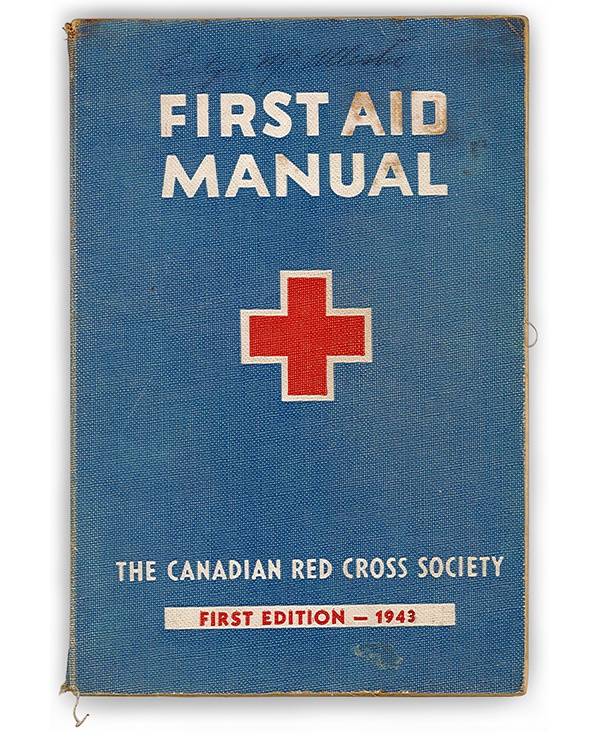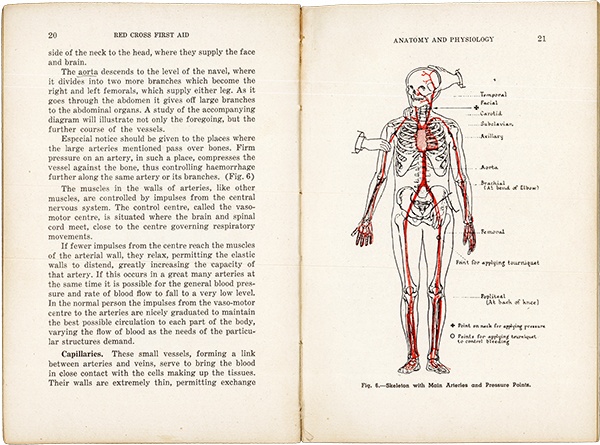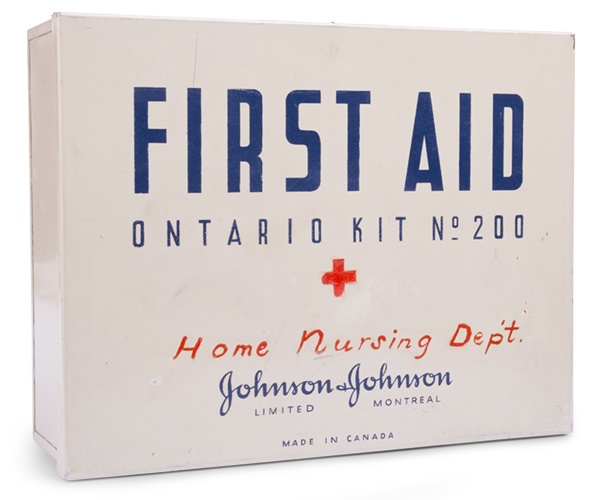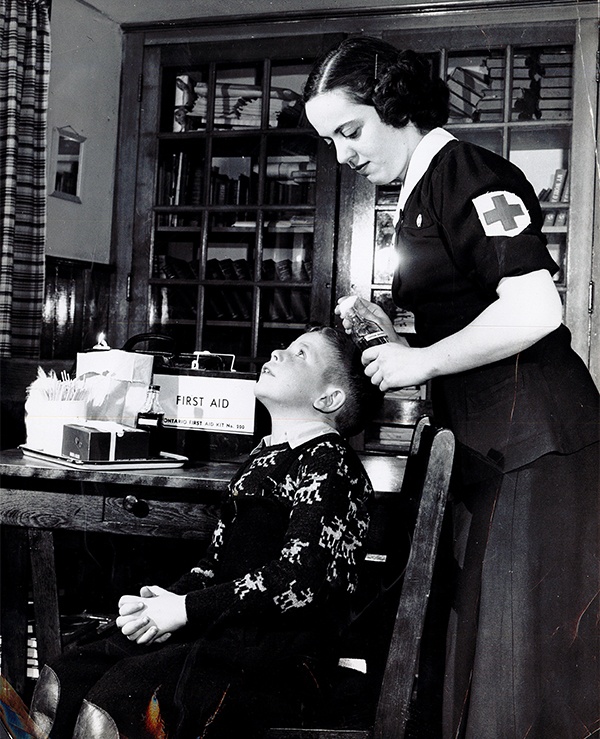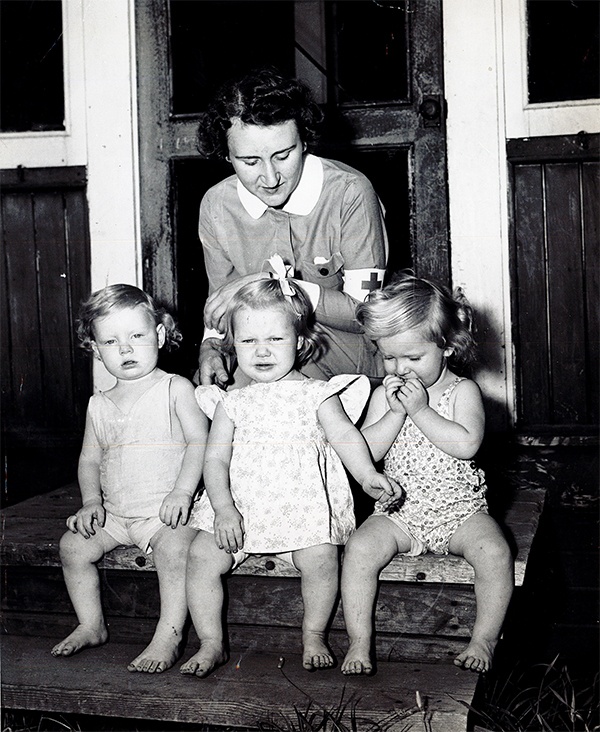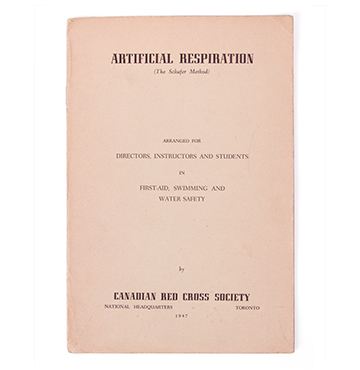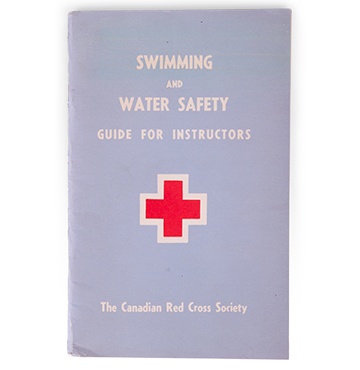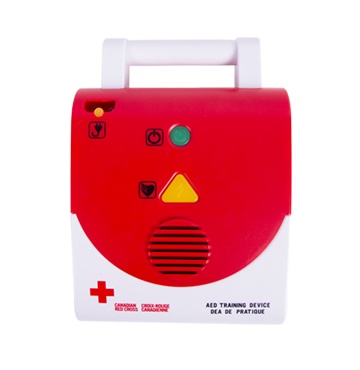Canadian Red Cross First Aid Manual, first ed.
One of the many ways the Canadian Red Cross has improved the health of Canadians over the years is by helping them to provide their own front-line care more effectively. Through much of the twentieth century, Red Cross First Aid and Red Cross Home Nursing classes did exactly this. The First Aid Manual shown here dates from the Second World War (1939-45), a period in which both First Aid and Home Nursing classes were in high demand.
First Aid and Home Nursing instruction offered two separate (but potentially complementary) skill sets. First Aid trained men and women alike to effectively respond to injuries and other health crises in the first moments of their discovery. These might be relatively minor wounds like cuts, scrapes, or broken bones, or major medical emergencies for which first aid offered immediate stopgap assistance before professional medical help could be accessed.
"First Aid and Home Nursing instruction offered two separate (but potentially complementary) skill sets."
By contrast, Home Nursing was designed specifically for women, and dealt with the other end of a health crisis: the period of convalescence after an illness or injury had been professionally treated. This was of particular importance before the advent of publicly-funded hospital insurance and Medicare in the late 1950s/1960s. Many Canadians could not afford the costs of a hospital stay or trained private duty nurse, so wives and daughters were expected to care for recuperating family members at home, for free.
Both First Aid and Home Nursing gained popularity during the Second World War when fears of enemy attack led many Canadians to seek whatever training they could acquire in order to prepare for such an emergency. Home Nursing briefly gained even more popularity in the 1950s, when the Cold War (1947-91) made nuclear war a real threat. Families forced to live in backyard nuclear fallout shelters for months or years would have had only their own healing skills to draw on (Luckily no attacks occurred).
Although prevailing ideas about the roles of men and women (particularly before the 1970s) held that nursing the sick was “natural” for women, it actually involved learned skills. Home Nursing classes offered women the most up-to-date information about preparing special invalid foods, setting up a functional sickroom, changing a bed with a patient in it, and so on. Both First Aid and Home Nursing classes combined lectures with hands-on practice, building students’ confidence in their ability to care for the sick and wounded.
One of the many ways the Canadian Red Cross has improved the health of Canadians over the years is by helping them to provide their own front-line care more effectively. Through much of the twentieth century, Red Cross First Aid and Red Cross Home Nursing classes did exactly this. The First Aid Manual shown here dates from the Second World War (1939-45), a period in which both First Aid and Home Nursing classes were in high demand.
First Aid and Home Nursing instruction offered two separate (but potentially complementary) skill sets. First Aid trained men and women alike to effectively respond to injuries and other health crises in the first moments of their discovery. These might be relatively minor wounds like cuts, scrapes, or broken bones, or major medical emergencies for which first aid offered immediate stopgap assistance before professional medical help could be accessed.
"First Aid and Home Nursing instruction offered two separate (but potentially complementary) skill sets."
By contrast, Home Nursing was designed specifically for women, and dealt with the other end of a health crisis: the period of convalescence after an illness or injury had been professionally treated. This was of particular importance before the advent of publicly-funded hospital insurance and Medicare in the late 1950s/1960s. Many Canadians could not afford the costs of a hospital stay or trained private duty nurse, so wives and daughters were expected to care for recuperating family members at home, for free.
Both First Aid and Home Nursing gained popularity during the Second World War when fears of enemy attack led many Canadians to seek whatever training they could acquire in order to prepare for such an emergency. Home Nursing briefly gained even more popularity in the 1950s, when the Cold War (1947-91) made nuclear war a real threat. Families forced to live in backyard nuclear fallout shelters for months or years would have had only their own healing skills to draw on (Luckily no attacks occurred).
Although prevailing ideas about the roles of men and women (particularly before the 1970s) held that nursing the sick was “natural” for women, it actually involved learned skills. Home Nursing classes offered women the most up-to-date information about preparing special invalid foods, setting up a functional sickroom, changing a bed with a patient in it, and so on. Both First Aid and Home Nursing classes combined lectures with hands-on practice, building students’ confidence in their ability to care for the sick and wounded.

